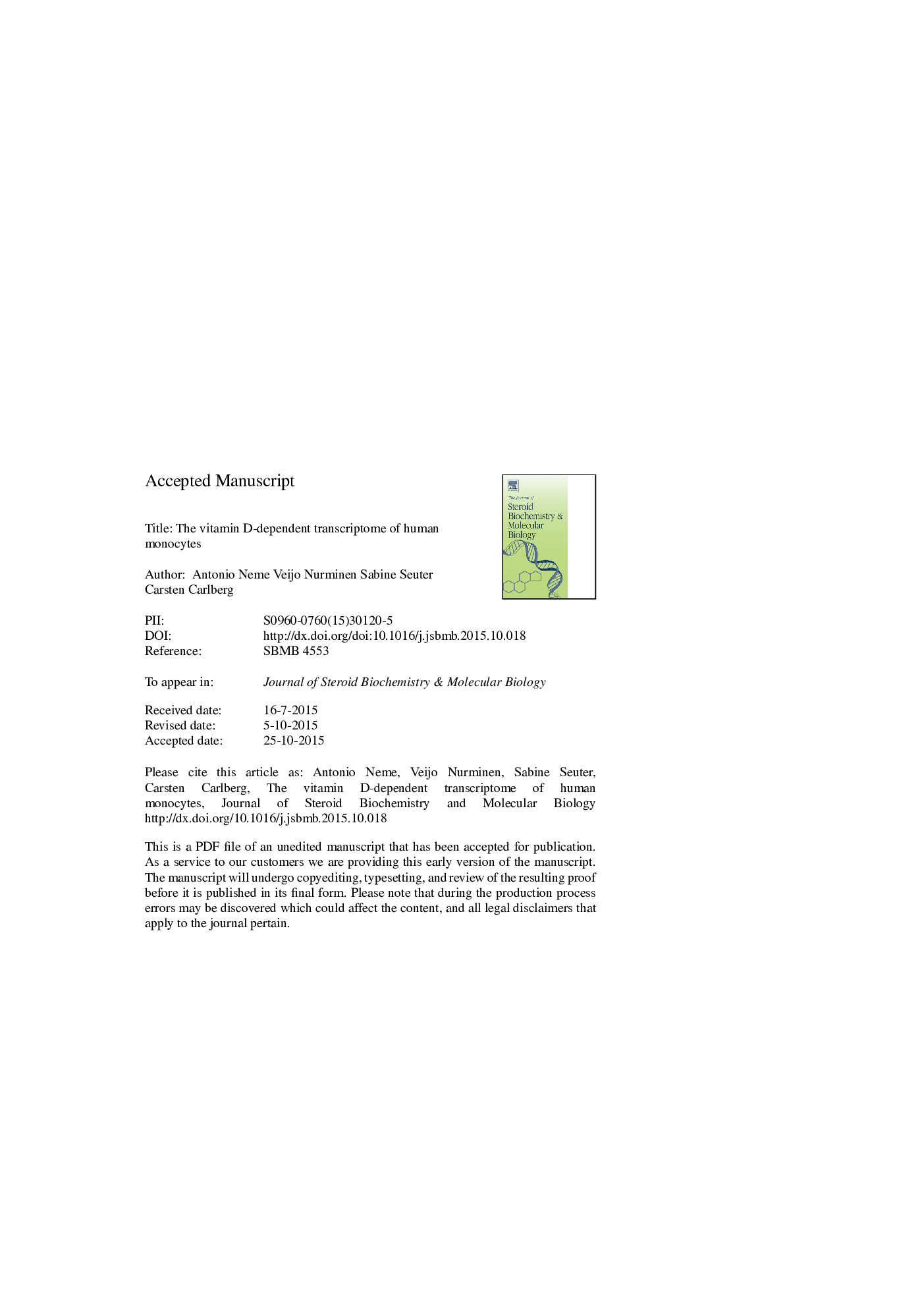| Article ID | Journal | Published Year | Pages | File Type |
|---|---|---|---|---|
| 5513242 | The Journal of Steroid Biochemistry and Molecular Biology | 2016 | 26 Pages |
Abstract
Monocytes are important cells of the innate immune system that can differentiate into macrophages and dendritic cells. The biologically active form of vitamin D, 1α,25-dihydroxyvitamin D3 (1,25(OH)2D3), serves as a ligand of the nuclear receptor vitamin D receptor (VDR). A key physiological function of 1,25(OH)2D3 is the defense against pathogens, such as those causing tuberculosis, that involves the modulation of the monocyte transcriptome. THP-1 cells are an established model of human monocytes, for which the at present largest set of 1,25(OH)2D3-affected genome-wide data are available. Here we summarize the insight obtained from the recent transcriptome of 1,25(OH)2D3-stimulated THP-1 cells, that was determined by triplicate RNA sequencing (RNA-seq). Primary and secondary vitamin D target genes being up- and down-regulated were related to changes in the epigenome of THP-1 cells, such as 1,25(OH)2D3-dependent chromatin opening and modulation of the genome-wide association of the transcription factors VDR and CCCTC-binding factor (CTCF) with their respective genomic binding sites. The anti-microbial response is the top-ranking early physiological function represented by 1,25(OH)2D3-stimulated genomic regions and genes, but also other immunity-related pathways, such as IL10 signaling, are activated. Taken together, the epigenomic and transcriptomic responses of THP-1 cells to 1,25(OH)2D3 represent a master example of the impact of vitamin D on human physiology.
Keywords
direct repeat spaced by 3 nucleotidesCyPChIP-Seq1,25(OH)2D3 or 1,25DCCLCathelicidinCTCFchemokine (C–C motif) ligandFAIRE-seqDR31α,25-dihydroxyvitamin D325(OH)D325-hydroxyvitamin D3cAMPfold changeformaldehyde-assisted isolation of regulatory elements sequencingcluster of differentiationCytochrome P450CCCTC-binding factor
Related Topics
Life Sciences
Biochemistry, Genetics and Molecular Biology
Biochemistry
Authors
Antonio Neme, Veijo Nurminen, Sabine Seuter, Carsten Carlberg,
